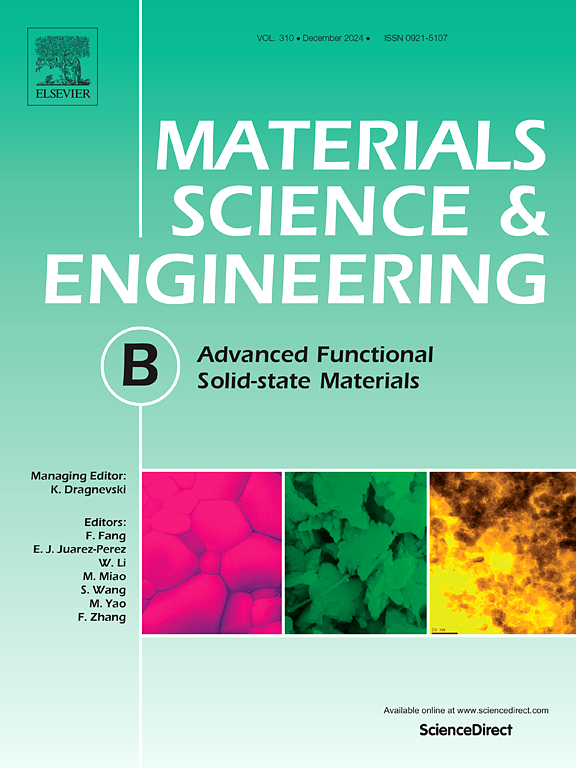Augmenting anisotropic gas sensitivity in Borophene/hBN van der Waals heterostructures via transition metal doping for advanced sensing applications
IF 3.9
3区 材料科学
Q2 MATERIALS SCIENCE, MULTIDISCIPLINARY
引用次数: 0
Abstract
This study used hexagonal boron nitride (hBN) as a substrate to construct a two-dimensional van der Waals heterostructure comprising borophene/hBN (B/hBN). Two types of borophene (B1, B2) are chosen to investigate their adsorption characteristics and sensing performance towards five harmful gases (CO, CO2, NO, NO2, SO2). The results indicate that NOX (X = 1,2) has strong chemical adsorption interactions with B1 and B2, while CO and SO2 exhibited position-dependent chemisorption on B1. Conversely, CO2 adsorption on B1 and COX/SO2 (X = 1,2) adsorption on B2 were characterized as physisorption. Transition metal doping (Cr, Mn, Fe, Co, Ni, Cu) into the B/hBN structure enhances the interaction between the system and gas molecules. Interestingly, V doping induces the breaking of one N-O bond in NO2, producing an O atom. Next, the sensing characteristics of B/hBN heterostructures were mainly studied by applying bias voltage, and it was found that they have high sensitivity at low concentrations. Therefore, B/hBN heterostructures can be considered as promising candidate materials tailored for two-dimensional gas sensors.
求助全文
约1分钟内获得全文
求助全文
来源期刊

Materials Science and Engineering: B
工程技术-材料科学:综合
CiteScore
5.60
自引率
2.80%
发文量
481
审稿时长
3.5 months
期刊介绍:
The journal provides an international medium for the publication of theoretical and experimental studies and reviews related to the electronic, electrochemical, ionic, magnetic, optical, and biosensing properties of solid state materials in bulk, thin film and particulate forms. Papers dealing with synthesis, processing, characterization, structure, physical properties and computational aspects of nano-crystalline, crystalline, amorphous and glassy forms of ceramics, semiconductors, layered insertion compounds, low-dimensional compounds and systems, fast-ion conductors, polymers and dielectrics are viewed as suitable for publication. Articles focused on nano-structured aspects of these advanced solid-state materials will also be considered suitable.
 求助内容:
求助内容: 应助结果提醒方式:
应助结果提醒方式:


